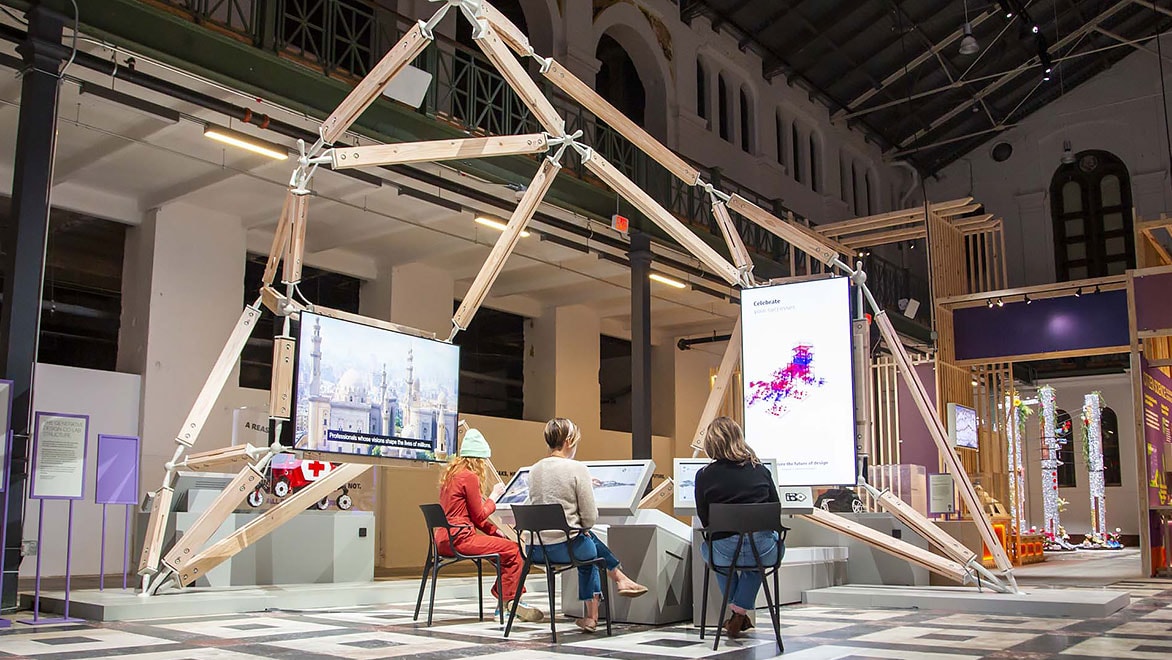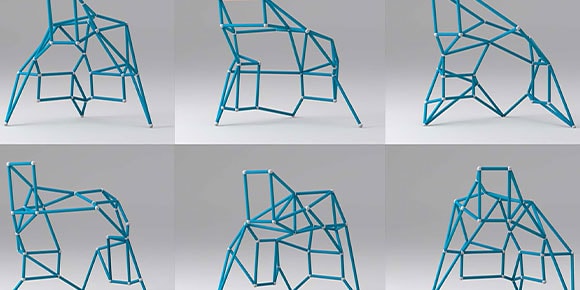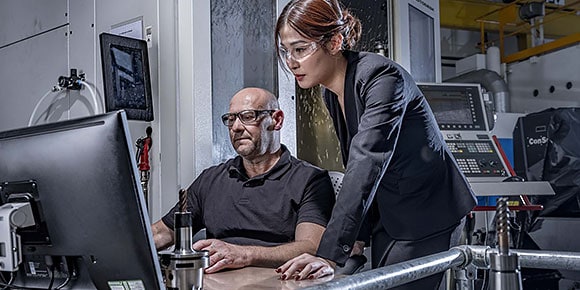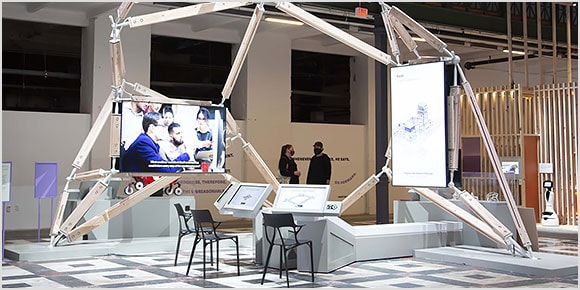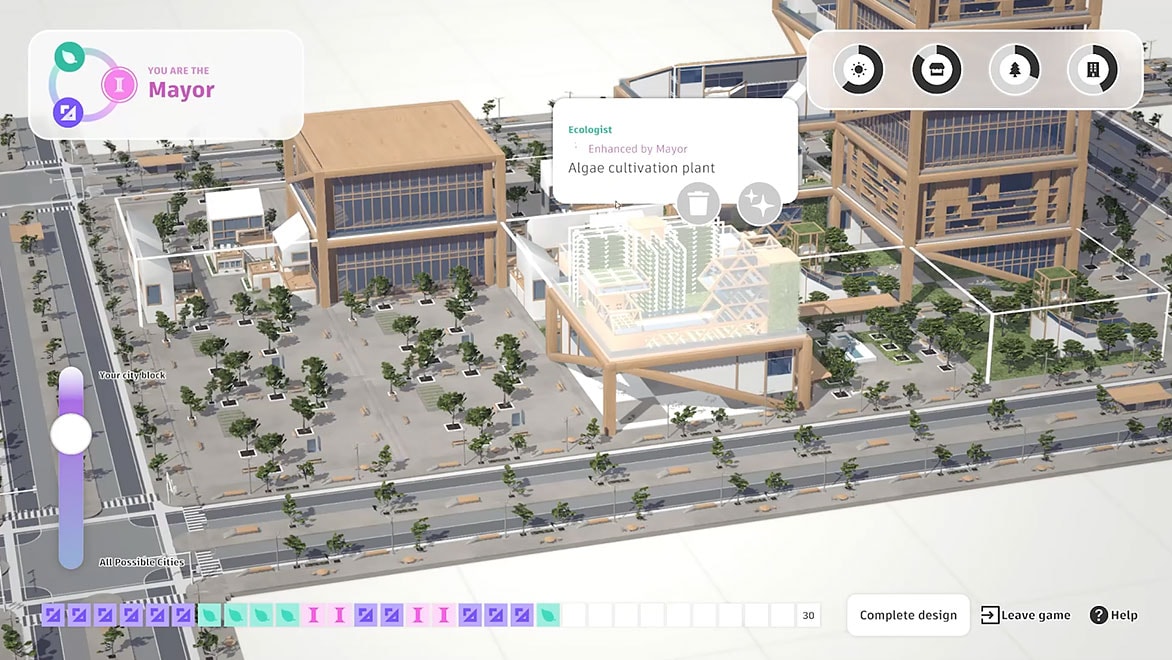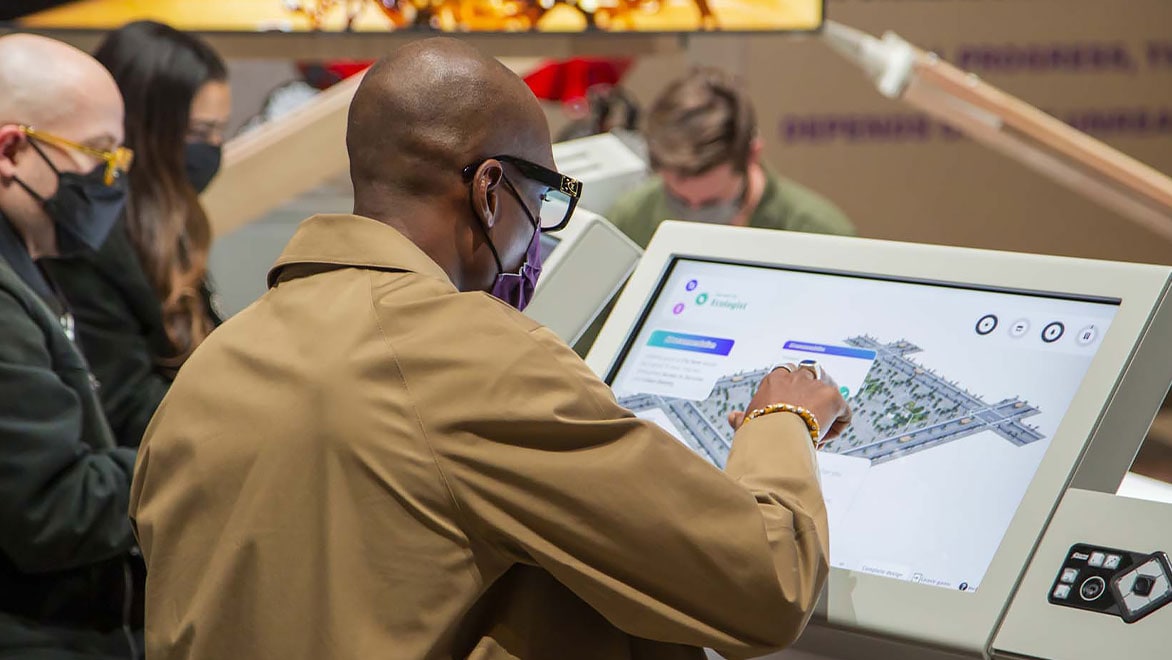The future of collaborative design
Autodesk and the Smithsonian explore human/AI collaboration
Autodesk and the Smithsonian explore human/AI collaboration
Autodesk partnered with the Smithsonian Arts + Industries Building (AIB) to explore how people might design a more sustainable and equitable future using generative design, a form of AI that uses design goals and requirements to generate many potential solutions in order to create better outcomes.
The Co-Lab features a one-of-a-kind structure designed by Autodesk Research using generative design, as well as a multi-player interactive experience called Future Communities, built on Autodesk technology, which invites visitors to work together to design a community with the help and suggestions of AI.
The Co-Lab generative design process allowed the team to quickly explore and refine multiple solutions to the design problem.
Our team specified requirements such as space limitations, visitor areas, weight capacity for heavy display screens, and more.
The AI generated thousands of options, prioritizing visitor experience and sustainability, and refined based on the team’s feedback.
After evaluating the best options, our team chose the most promising structure based on resources and alignment to desired outcome.
The AI detailed the specifications, resulting in a structure that is lightweight, futuristic, sustainable, and easy to build and disassemble.
Future Communities is an interactive experiment exploring how multiple stakeholders with different objectives and limited resources can collaborate and make trade-offs that lead to greener cities, commercial vibrancy, efficient spaces for people to live and work, and fair distribution of services to all residents.
To build a more equitable and sustainable future, diverse voices and values are vital contributions to the prototype. The way we build and train the AI affects its use and recommendations. As such, Future Communities is an invitation for visitors to join us in shaping the future of collaborative design.
Explore the Autodesk Co-Lab at the Smithsonian's FUTURES exhibition. Future Communities will also be featured at the Autodesk Gallery.
FUTURES invites visitors to dream big and imagine many possible futures on the horizon.
Smithsonian Arts + Industries Building
Washington, DC
Through July 6, 2022
Learn how we partner with innovators everywhere to design and make a better world.
Autodesk
San Francisco, California
Re-opening 2022
See how our customers are pushing the boundaries of their industries to redefine what’s possible.
